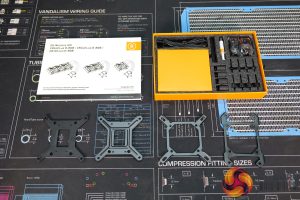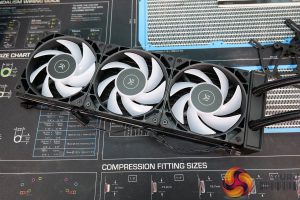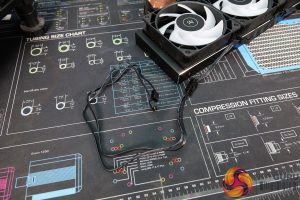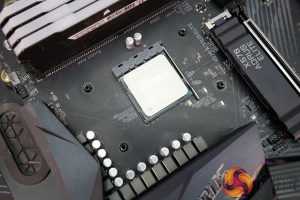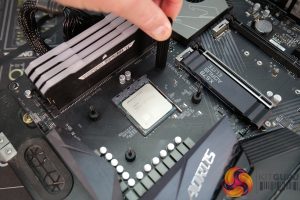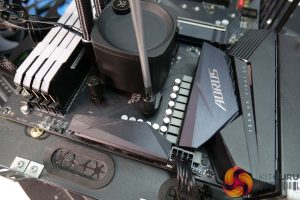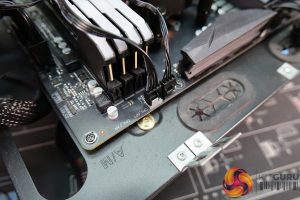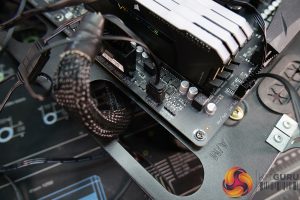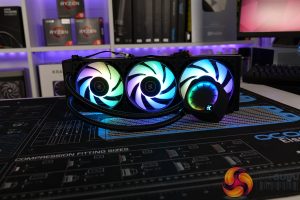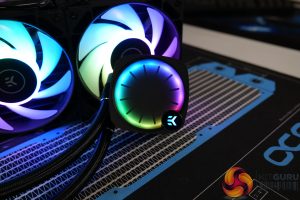Included with the cooler is a detailed installation manual printed in several languages and a fitting kit for all current Intel and AMD desktop platforms. The fitting kit includes several types of standoffs, backplates, upper mounting brackets and fan screws, as well as a standoff tightening tool, spring-loaded thumbscrews, a fan extension cable and a small tube of thermal compound for re-installation. It's all neatly arranged inside a box with foam cutouts.
Installing the EK-Nucleus AIO is a straightforward process, Novice users should find it easy enough to follow the manual and install the cooler without hitting any problems. Overall installation time is between 15-20 minutes depending on the user's installation skill level/experience.
Using the screws provided, fasten the fans to the radiator and connect the cables in a daisy chain. The end of the daisy chain cable can then be connected to the extension cable which allows the connection of the fan PWM cable and D-RGB cable to the motherboard headers or to a standalone fan/RGB hub. Find a suitable place in your case to install the radiator.
To install the cooler on AMD AM4/AM5 platforms first you need to remove the stock AMD plastic CPU retention brackets. Select the correct type of standoff and screw them in by hand to the original AMD backplate, use the standoff tightening tool included with the cooler for final tightening.
Attach the AMD upper mounting bracket to the base of the pump using the provided screws. The CPU block cold plate comes with a thermal compound coating pre-applied so there’s no need to put extra thermal compound on the CPU. Lower the CPU block down over the standoffs and tighten the block in place using the four spring-loaded thumbscrews.
To complete the installation, connect the wiring up to the motherboard. The 4-pin PMW cable from the fans can be connected to the motherboard CPU_FAN header and connect the pump PWM cable to the motherboard CPU_OPT header. The 3-pin D-RGB cables from the fans and pump can be daisy-chained and then the female end connector plugged into a 3-pin 5V D-RGB header either on the motherboard or a standalone RGB hub.
There are two zones of RGB lighting on the EK-Nucleus AIO, on the fans and on top of the CPU block. The effects are controlled by motherboard software or a standalone RGB hub, so whatever effects are supported by the software or hub will be applied to the cooler.
 KitGuru KitGuru.net – Tech News | Hardware News | Hardware Reviews | IOS | Mobile | Gaming | Graphics Cards
KitGuru KitGuru.net – Tech News | Hardware News | Hardware Reviews | IOS | Mobile | Gaming | Graphics Cards


